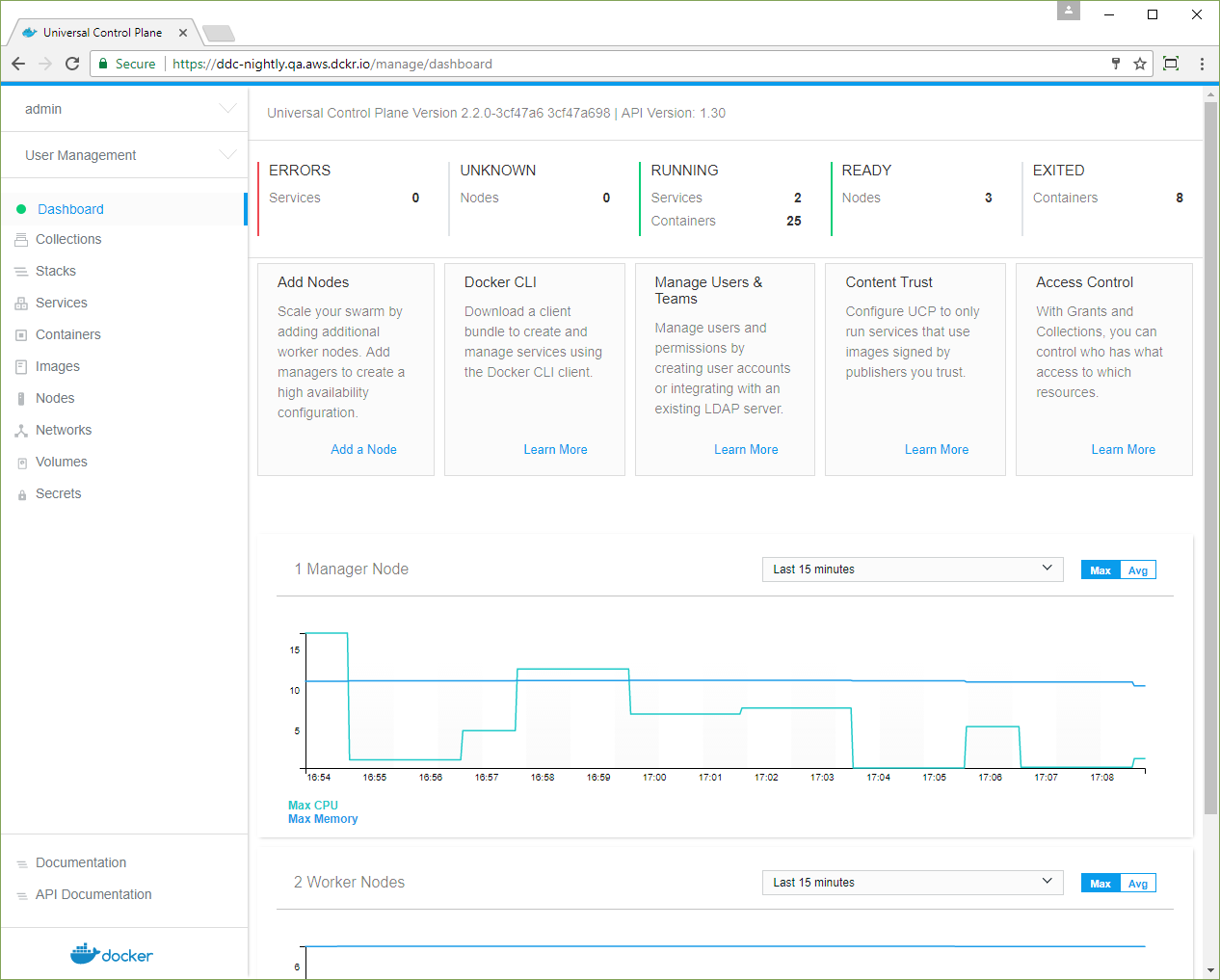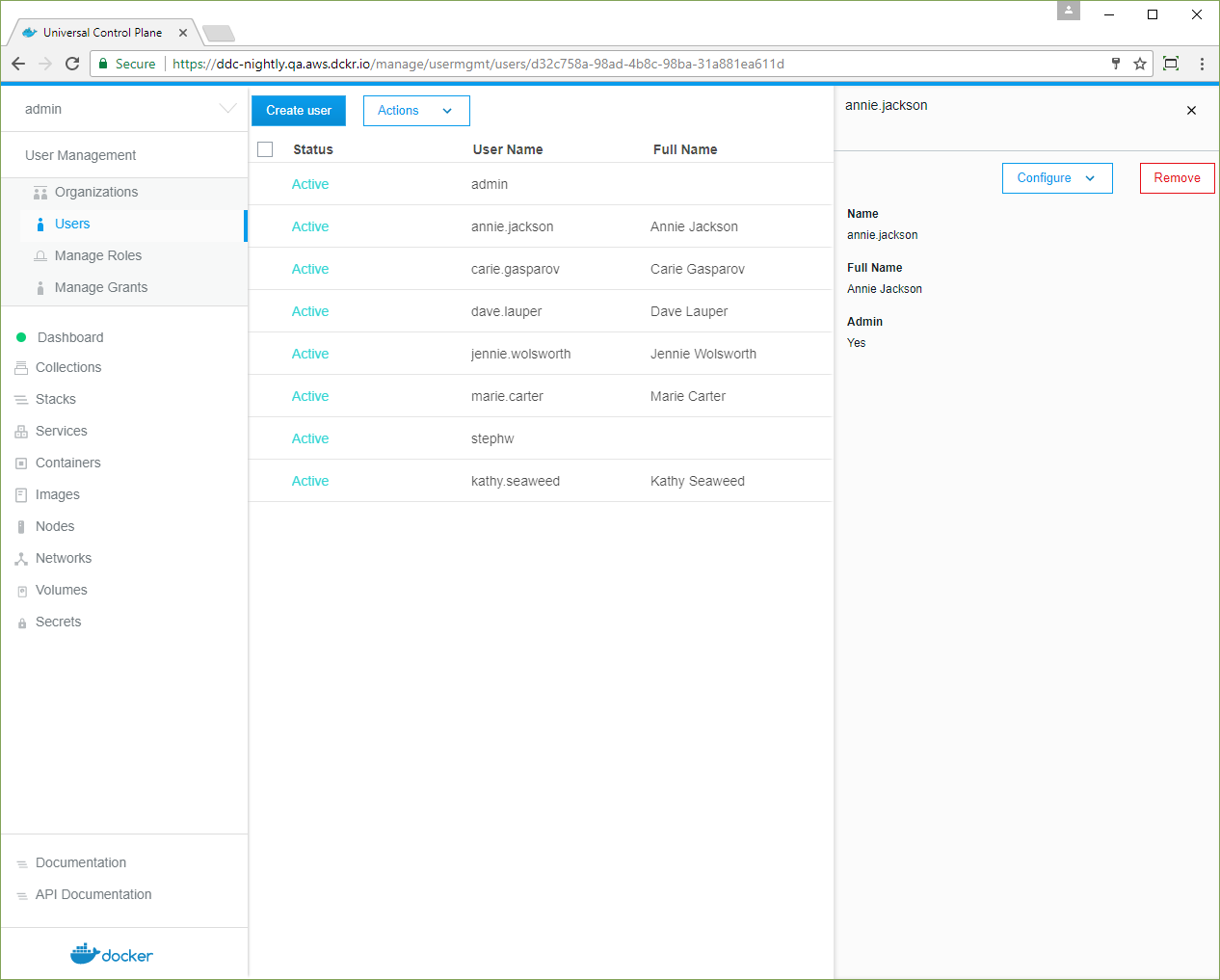Universal Control Plane overview
Estimated reading time: 1 minuteDocker Universal Control Plane (UCP) is the enterprise-grade cluster management solution from Docker. You install it on-premises or in your virtual private cloud, and it helps you manage your Docker swarm and applications through a single interface.

Centralized swarm management
With Docker, you can join up to thousands of physical or virtual machines together to create a container cluster, or swarm, allowing you to deploy your applications at scale. Docker Universal Control Plane extends the functionality provided by Docker to make it easier to manage your swarm from a centralized place.
You can manage and monitor your container cluster using a graphical UI.

Since UCP exposes the standard Docker API, you can continue using the tools you already know, including the Docker CLI client, to deploy and manage your applications.
As an example, you can use the docker info command to check the
status of a Docker swarm managed by UCP:
$ docker info
Containers: 38
Running: 23
Paused: 0
Stopped: 15
Images: 17
Server Version: 17.06
...
Swarm: active
NodeID: ocpv7el0uz8g9q7dmw8ay4yps
Is Manager: true
ClusterID: tylpv1kxjtgoik2jnrg8pvkg6
Managers: 1
…
Deploy, manage, and monitor
With Docker UCP, you can manage from a centralized place all of the computing resources you have available, like nodes, volumes, and networks.
You can also deploy and monitor your applications and services.
Built-in security and access control
Docker UCP has its own built-in authentication mechanism and integrates with LDAP services. It also has role-based access control (RBAC), so that you can control who can access and make changes to your swarm and applications. Learn about role-based access control.

Docker UCP integrates with Docker Trusted Registry so that you can keep the Docker images you use for your applications behind your firewall, where they are safe and can’t be tampered with.
You can also enforce security policies and only allow running applications that use Docker images you know and trust.